Get Tech Tips
Subscribe to free tech tips.
Commissioning a Residential Split Heat Pump
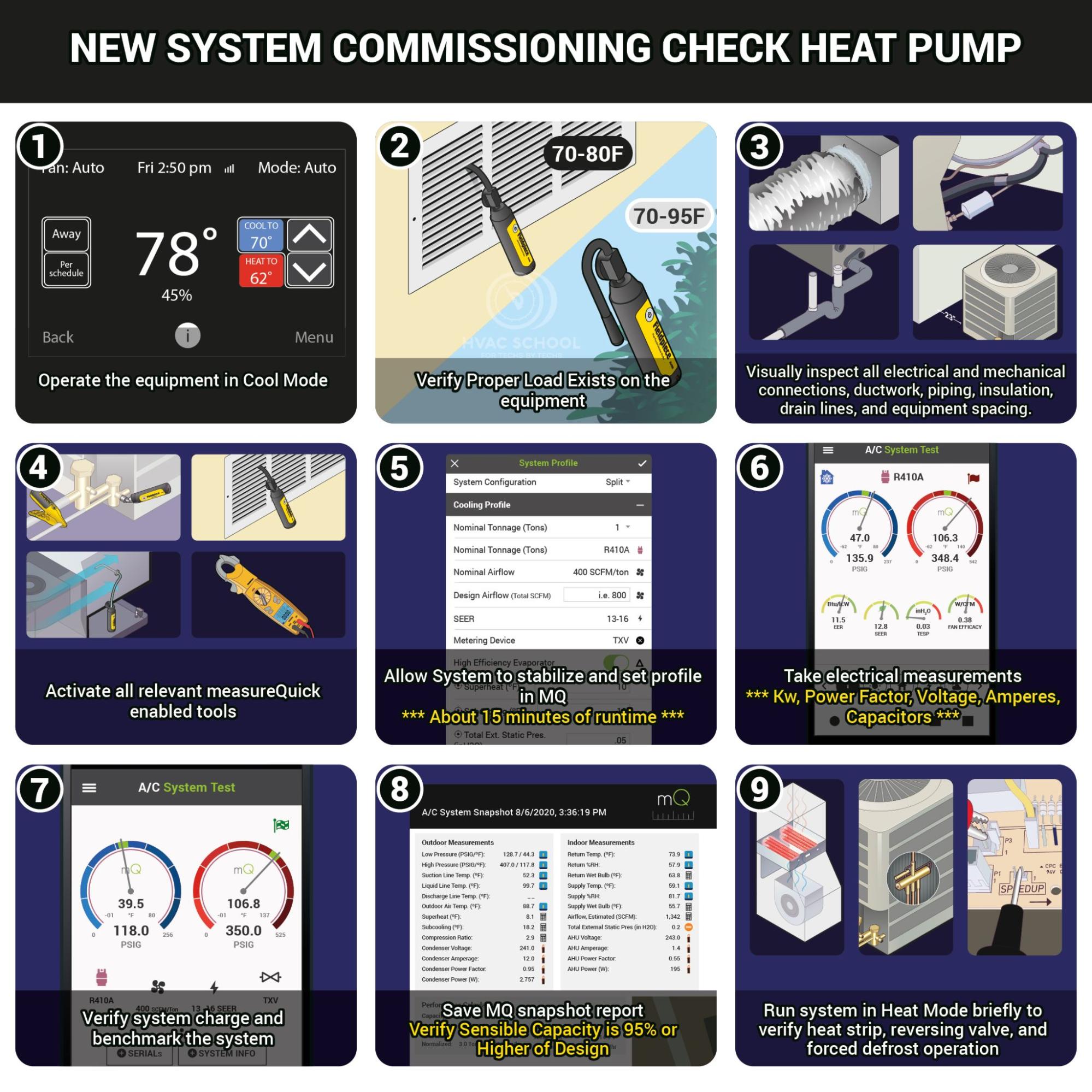
Commissioning a system is critical anytime a technician makes any type of repair or alteration to an existing system. It’s also important if you’re working on a system you’ve never worked on before, and it’s a vital part of a new install start-up. Basically, commissioning systems is an everyday responsibility for technicians, which means everyone should be familiar with them. But that also means there are tons of things to miss if we don’t do them carefully.
We’ve talked about commissioning basic refrigeration equipment before HERE, but commissioning looks a lot different for a heat pump. Before we go any further, to summarize, commissioning a system means we are doing whatever is necessary to get the equipment in the best possible operating condition. Commissioning systems tend to appear cost-prohibitive because there are sometimes long lists of things that must be done to really get a system to optimum performance. But with the introduction of measureQuick as a tool for technicians, commissioning systems is getting faster and more thorough at the same time!
Basic Commissioning Order
Before beginning a commissioning, the first thing to think about is which part of the system you will be interacting with. There’s the air side, the condensate side, the refrigerant side, and the electrical side. You’ll interact with all of these system components, but there is a combination of these parts that make up the best possible sequence to be commissioned:
- Electrical
- Airflow/Ductwork
- Refrigerant
- Condensate
Why this specific order? Well, if there is anything wrong with the electrical side, it can prohibit optimum operation for the air side and refrigerant side. If there’s anything wrong with the airflow/ductwork, it can prohibit proper operation for the refrigerant side, and so on. Checking each area of the system in this order ensures that nothing gets missed during the commissioning process. It also keeps a technician from having to recheck the charge that is no longer the same because the airflow wasn’t set properly.
In truth, most of these areas of the system will be checked simultaneously, especially if you are using measureQuick. But if there were a best-practice sequence of commissioning, this would be it.
Electrical
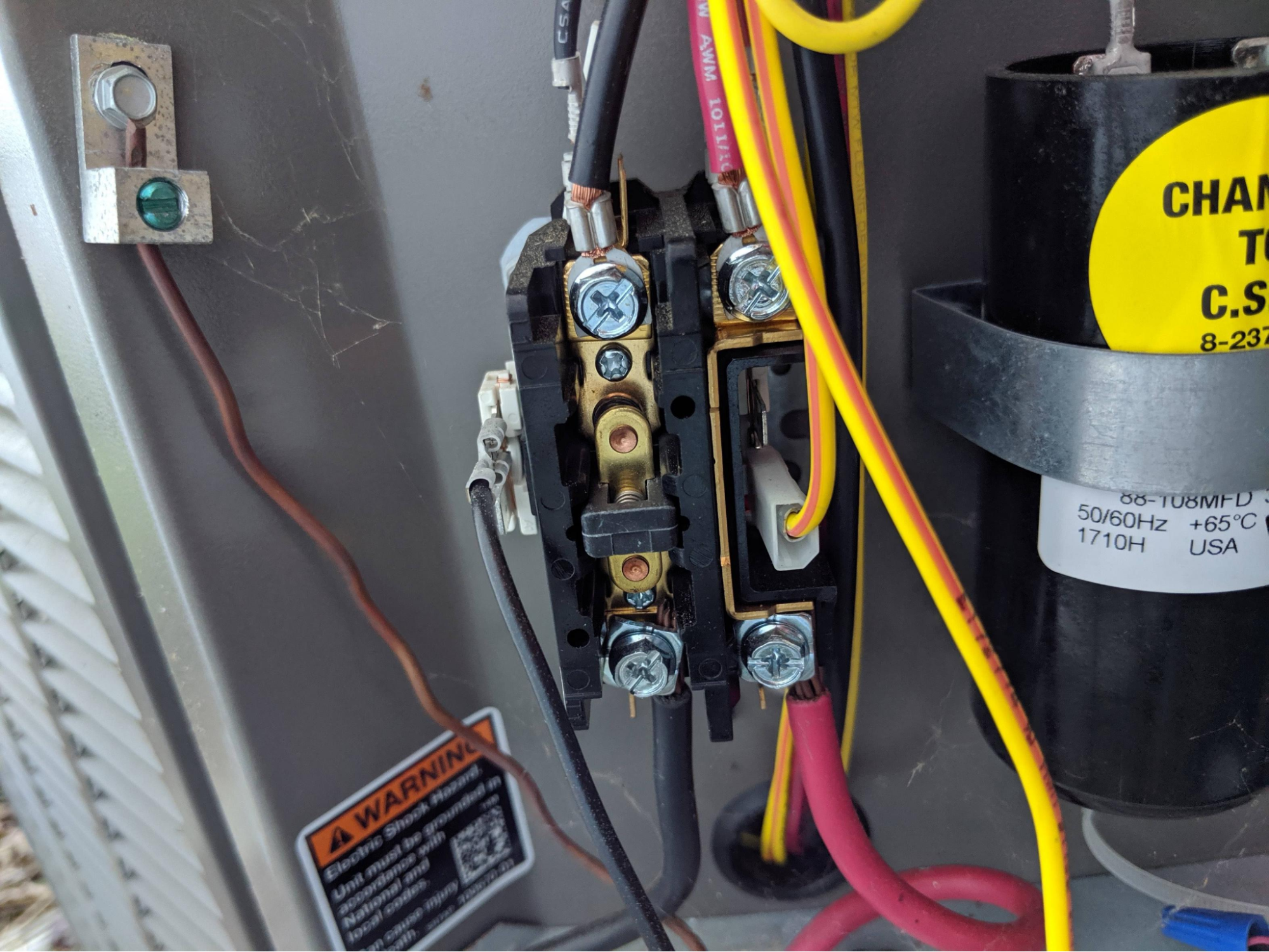
The electrical side of a system is one of the easiest to check, and it’s also one of the easiest to overlook. Use your eyes first! Visually inspect everything. With the power off to the appliance, give a good tug on all the electrical connections, including contactors, relays, wire nuts, etc., to ensure that the connections are solid and nothing is loose. Use your ears to listen for any abnormal buzzing/humming from transformers, relays, and other components. Confirm that the wire size is appropriate for the application based on the equipment ratings, including any heater kits installed. Make sure the applied voltage matches the way the motors and transformers are wired up. Keep a lookout for any discoloration or char marks on the wires, and pay very close attention to any splices in the thermostat wire.
The next step would be to study the wiring diagrams and the installation manuals (RTFM!) to make sure the wiring is correct and that any field-applied settings are made correctly. You’ll want to check the defrost board wiring and even capacitor wiring. Many technicians keep multi-speed blower motors set to the factory setting, but that may need to be changed, depending on your market and the specific application of the system.
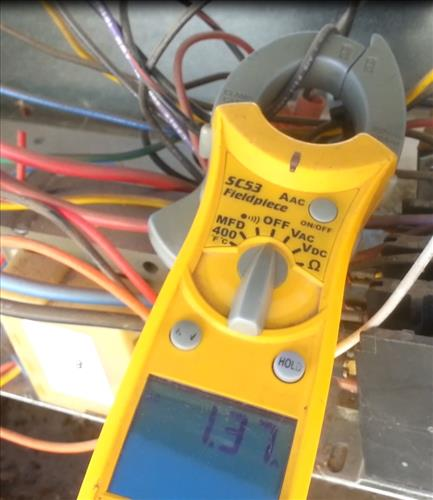
Amperage from the compressor and fan motors can also tell you something about how the system is operating. The current draw will change by the load, but it’s not hard to tell when a compressor is over or under-amping under the given conditions. If you are using measureQuick, you will even be able to check power factors and calculate EER and estimated SEER from your electrical readings
Airflow/Ductwork
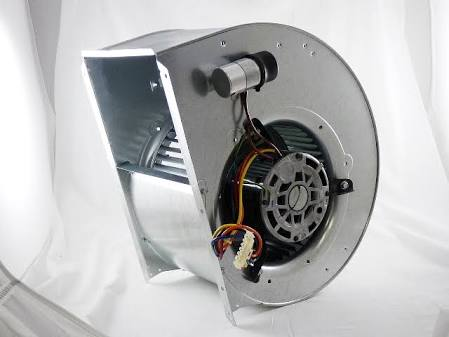
Airflow and ductwork are next on the list, and they’re probably the most important areas of the system to commission. Commissioning the air side of any system includes making sure the settings for the indoor unit are set up correctly and that the air delivery system (the blower wheel, condenser fan, the indoor and outdoor coils, the filter, the ductwork) is clean and not restricted. Again, it’s critical to use your eyes to confirm that the motors are running and your ears to listen out for any abnormal sounds. Also, pay attention to any air leaks in the cabinet of the indoor unit on either the supply or return side.
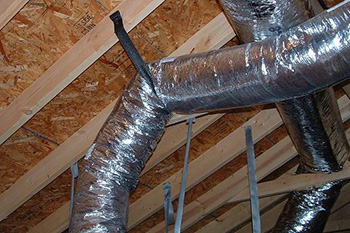
Observing the ductwork for kinks in flex and crushed metal pipe or looking for air leakage can help answer a lot of questions during the commissioning process. Your ears can help with this, too, because there may be an audible whistling sound from the cabinet of the indoor unit when air leakage is present.
Use your hand to feel whether or not air is actually coming out of the supply registers and whether or not it is hot or cold (depending on the season). Running your hand across the top of the outdoor unit is very helpful; in the cooling season, the air from the top of the unit should be hot, and it should be cold in the heating season. If you run your hand across the top of the outdoor unit and the fan is running but don’t feel any air, the motor may be running backward due to an electrical issue.
At this point, one thing should be clear: a good technician will use their senses before making any measurements. Measurements are key, but if a technician can’t use their senses first, it’s likely that the measurements will only confuse them. Be observant and aware of how the system is operating by your senses before you begin measuring anything.
Once everything is confirmed to be clean and set up properly, it’s time to let the unit run. Letting the system run 15-20 minutes uninterrupted is standard. During this time, you will need to make sure the load on the space (either heating or cooling) is enough for your testing. If you start to notice a space dropping 5 degrees in 20 minutes, then you have a totally different sizing problem. But we'll save that for another article!
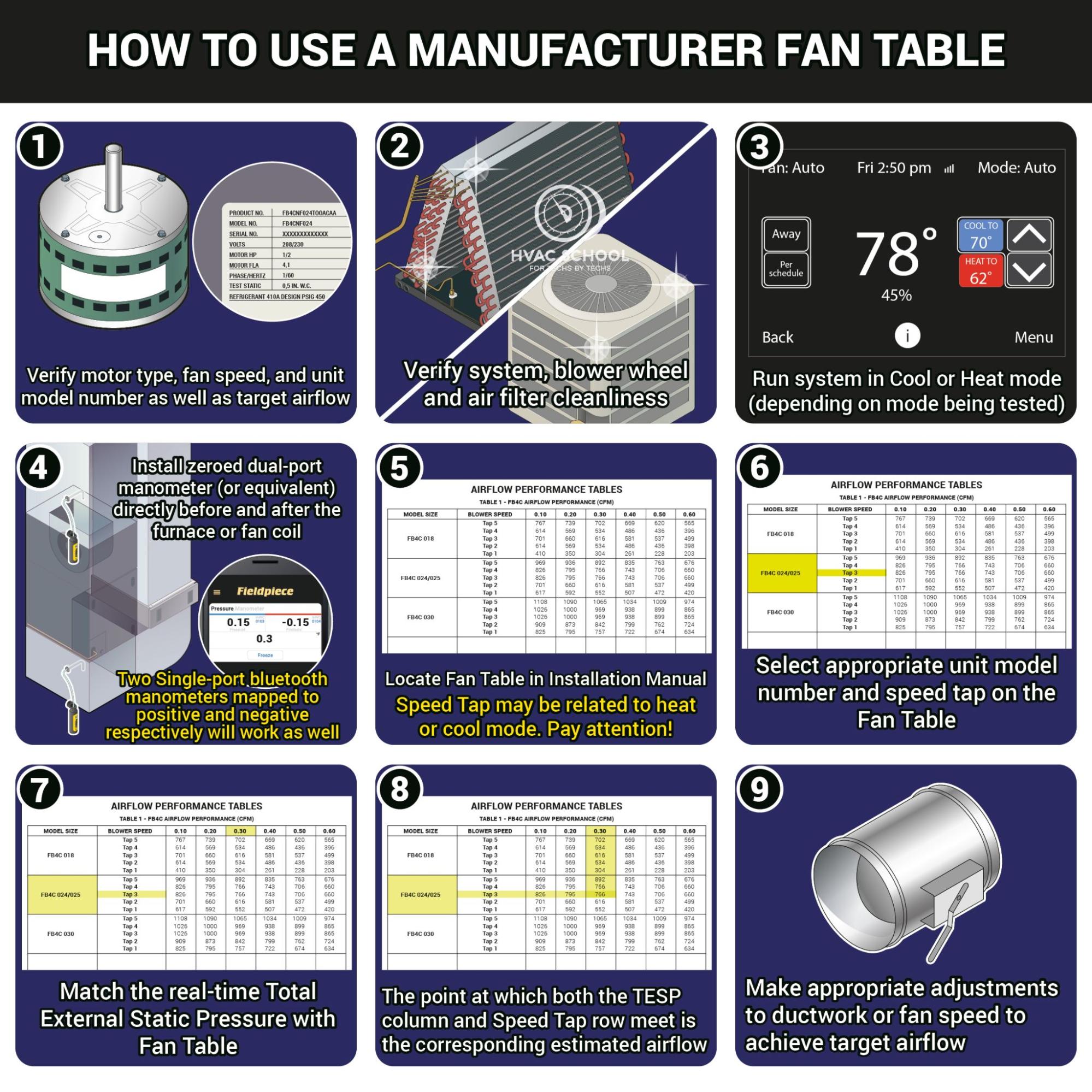
Now it’s time to test/measure. Most technicians are going to test airflow by using static pressure and a fan table. This method is perfectly fine so long as the technician understands that a static pressure reading and fan table will give only an approximation for airflow in a system. Static pressure is valuable because we can determine whether or not the total system static pressure is within range for the system’s design. We can also see whether there might be an issue on either the return or supply side of the ductwork. In relation to the condensate side of the system, a return static pressure 0.4” w.c. and above can cause condensate to be picked up by the blower and slung around the cabinet.

After the airflow and ductwork have been tested, it’s possible that balancing may need to be done. You can balance a system by carefully and incrementally dampening up or down a duct in order to increase or decrease the amount of air supplied to a zone. We won’t get too technical with the information involved with air balancing a space here, but it’s important to realize that there are simple balancing practices that can and should be done when commissioning a system.
Refrigerant

The refrigerant charge is the next area of the system to check during commissioning. The first thing to do on a startup is to weigh in the charge. Take the length of the line set and calculate how much more refrigerant should be added to the charge of the system (for most residential split heat pumps, the standard calculation for weighing in the correct charge is as follows: 0.6 oz/ft of line set after 15ft. Refrigerant Charge Calculators like THIS ONE can help in other applications.)
If you’re not on a startup, then all you’ve got to do is hook up your refrigerant gauges/probes and temperature probes to the system and let it run for at least 15-20 minutes. For R410a systems especially, it’s important to allow time for the refrigerant to stabilize before attempting to make any kind of assessment. Once the system has stabilized, the readings to be taken are superheat, subcooling, line temps, saturation temps, pressures, and air temperature split (Delta T = Return Temp – Supply Temp). Remember, there are ways to determine what these readings should be. To revisit this, here is the LINK.

During the heating season, sending the outdoor unit into a forced defrost is an important step. Ensuring that the defrost sensors are properly operating can prevent a future service call. During runtimes in cold weather, you may be able to observe the freeze patterns on the outdoor coil. Freeze patterns on an outdoor coil in heat mode should be uniform across the entire coil. Confirming the reversing valve operation is critical during the heating season. When the system is in defrost, make sure to confirm that the heat strips inside are actually operating.
When you’ve finished balancing and checking the charge, always double-check the Schrader cores in the service ports for leaks. I always apply a small amount of Nylog Blue to the caps to help prevent leaks and keep the caps from getting stuck the next time a technician goes to remove them.
Condensate

Finally, we reach the infamous condensate area of the system. Failing to check the condensate drain is the #1 reason for callbacks in hot and humid climate areas. If the drain is not set up properly, it can cause the system to shut down due to a tripped float switch. Or worse, it can cause expensive water damage. To really commission the condensate side of a system, there are two main points to consider:
- Is the unit draining?
- Is the float switch working?
To make sure the unit is draining properly, the cabinet itself must be level. On very rare occasions, the cabinet may need a slight tilt towards the primary drain port. However, in typical applications, the appliance should be perfectly level.
The drain should always be trapped. It doesn’t matter if the cabinet is positive or negative pressure. Even positive-pressure cabinets can benefit from a condensate trap because it will prevent air loss. If the drain is gravity-fed, the pitch of the horizontal section of the drain line should be about ¼” every 1 foot, and there should be a clean-out tee and vent installed for easy maintenance. A clean-out tee that is installed before the trap should be capped off.
Another important detail is to make sure the drain line, including the trap and at least 5ft of a horizontal run, is insulated. Many times, the drain line is located in unconditioned spaces and will begin to sweat and drip once cool condensate begins to run through it. To prevent potential water damage, insulate the drain line.

If there is a condensate pump installed, take care to ensure the vinyl tubing of the pump won't kink over time. Make sure the pump reservoir is clean and actually operating properly. If the reservoir is mounted, make sure it’s securely fastened and doesn’t sag when water fills up.
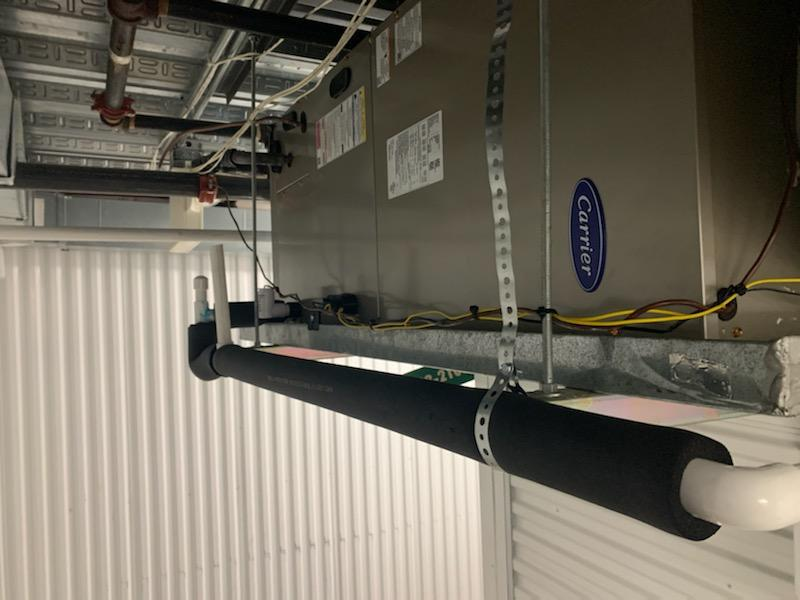
Secondary drain pans are important to check as well. If the drain pan is hung beneath a horizontally installed indoor unit, it can be beneficial to slightly tilt the pan to one corner (the corner where the pan switch is located). This tilt will trip the switch sooner and will keep the entire pan from filling up. To test the switches, lift the floats and observe whether or not the electrical path is broken. You can do this with the system running or by using a voltage or ohmmeter.
Whew! That’s a lot, isn’t it? The good news is that if you’re reading this article, you should already be familiar with measureQuick. And if you are already using measureQuick during service calls and commissioning, you know that a lot of the things covered in this overview can be done simultaneously. Not only does that allow experienced technicians to cover more ground more thoroughly, but it also ensures that newer technicians don’t miss anything. For more information on commissioning, and for an extensive soup-to-nuts look at how you can use measureQuick for commissioning, here are some more resources:
https://hvacrschool.com/videos/residential-system-commissioning-kalos-meeting/
https://hvacrschool.com/videos/cooling-commissioning-measurements-walk-through-w-measurequick/
https://hvacrschool.com/videos/installation-mindset-ducts-venting-commissioning/
This overview is pretty specific to residential split system heat pumps. Much of the information in this article can also be applied to rooftop units and package units, but the main thing to remember is that no one application is ever quite the same as another. Every application you work on will have its quirks, and the best advice to follow no matter what you do is the Read The Fantastic Manual!
—Kaleb Saleeby











Comments
To leave a comment, you need to log in.
Log In